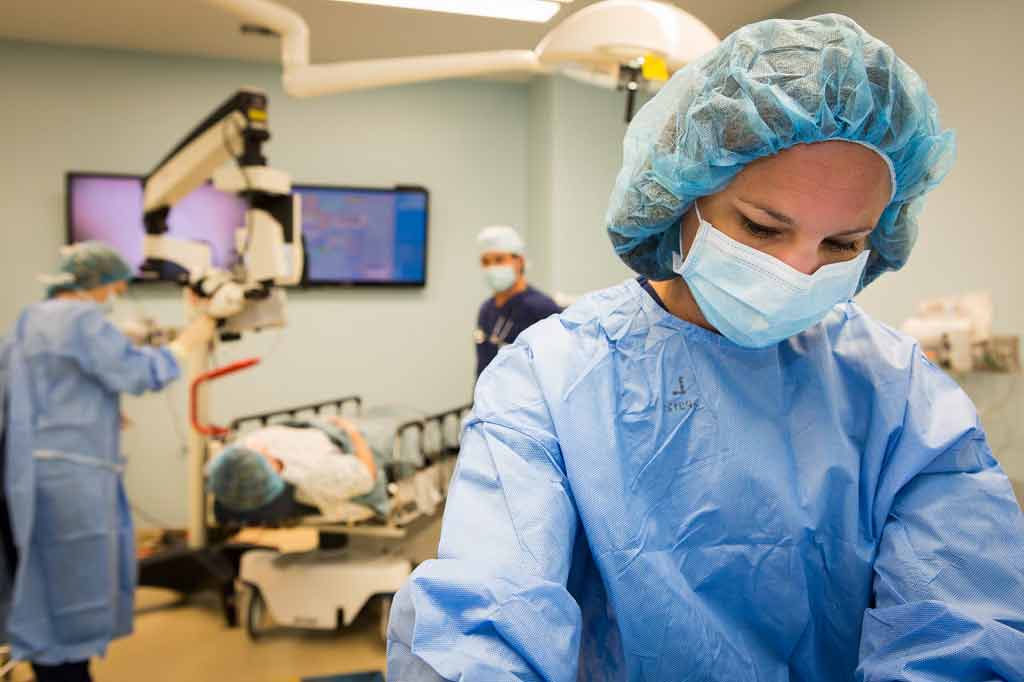Artificial ear grown in lab
Medical practice
"In a new development in tissue engineering, [scientists] have grown a human-like ear from animal tissue," The Independent has reported. This research focused on growing a "tissue engineered" outer part of the ear in the laboratory...
“In a new development in tissue engineering, [scientists] have grown a human-like ear from animal tissue,” The Independent has reported.
This research focused on growing a “tissue engineered” outer part of the ear in the laboratory. The researchers didn’t attempt to grow the parts of a human ear used in hearing.
The researchers designed an adult-sized 3-D ear scaffold, made out of wire coated in collagen.
They then successfully “seeded” cartilage cells onto this scaffold, and grew them in the laboratory before transplanting the ear onto a rat for 12 weeks. The engineered ear maintained its shape and flexibility when transplanted, and the tissue resembled normal cartilage.
The hope is that the technique could eventually be used to grow replacement ears for people who have lost them in accidents or for those who are born without them.
However, the study used sheep cartilage cells, and the technique needs to be tested using human cells to check that it performs as well. Ideally, the technique would use a person’s own cells to prevent the immune system from rejecting the ear. Researchers will also need to think about the best way to transplant the ears onto humans.
This fascinating study adds to an expanding body of research into laboratory grown human replacement tissues and organs. It is relatively early days for this technique, but research is moving fast in this area and we will undoubtedly hear more about it in the future.
Where did the story come from?
The study was carried out by researchers from two hospitals and Harvard Medical School in Boston, and the Kensey Nash Corporation in Philadelphia. The corporation develops regenerative medicine technology. It was funded by the US Armed Forces Institute of Regenerative Medicine.
The study was published in the peer reviewed Journal of the Royal Society Interface, which has been made free to download on an open access basis.
The media generally covers this story in an appropriate way, pointing out the advances that this study offers, but also that the ear was made of animal tissue.
What kind of research was this?
This was a laboratory and animal research study that aimed to improve techniques for growing replacement human outer ears. These replacements may be used by people who have lost an ear, for example in an accident or through burns, or for those who are born without one. The researchers say that surgically reconstructing the outer ear is challenging. The most important aspects of an ear replacement, they say, are being able to maintain its shape and being flexible like a normal outer ear.
Previous experiments have succeeded in growing cartilage cells into a small ear shape using a biodegradable scaffold. The current study wanted to develop an adult ear-sized scaffold with a more aesthetically pleasing appearance. It also aimed to test a new non-invasive way of assessing the three-dimensional shape of the ear replacement.
What did the research involve?
The researchers obtained a 3-D digital model of an adult human ear and used it to design an aesthetically pleasing ear scaffold.
They printed this scaffold using 3-D printing, and then created a plastic mould of it. Three-dimensional printers can create virtually any type of solid design by building up multiple layers of a material (usually plastic or resin).
The researchers designed a wire scaffold to fit in this mould and this wire scaffold was then coated in collagen obtained from cow skin. Cartilage cells were extracted from sheep cartilage and grown in the laboratory before being “seeded” onto the ear scaffolds. These seeded scaffolds were then grown in a nutrient solution in the lab for two weeks to allow the cells to grow and divide and cover the scaffold.
Finally, these ear-shaped structures were surgically implanted under the skin of nude (hairless) rats, where they were grown for 12 weeks. These rats have defective immune systems and do not reject implanted tissue. The researchers used 3-D imaging, CT scanning and computer programs to assess the 3-D shape of the ears. They also tested whether the engineered ears could bend and return to their original shape. Finally, they assessed the structure of the tissue in the engineered ear under the microscope.
What were the basic results?
The researchers found that the ear implants were well tolerated by the rats. The wire-supported ear implants looked like human ears and were flexible. They found that when they tried to make implants without the wire supports these distorted more easily.
Looking at the implanted tissue under the microscope showed that it had a similar appearance to normal cartilage.
How did the researchers interpret the results?
The researchers concluded that they had developed an improved design for an ear scaffold, and a method to assess the three-dimensional structure and bending of the tissue-engineered ear.
Conclusion
The researchers who carried out this fascinating study have grown an improved, adult-sized tissue-engineered ear in the laboratory. This ear can be successfully transplanted into a rat and maintain its shape and flexibility. This research is in its early stages, and used cartilage cells from sheep. If these artificial ears are to be used in humans the techniques will need to be tested with human cartilage cells. Researchers will need to think about the best way to surgically transplant the ears into humans.
Much research has focused recently on developing techniques to grow replacement human tissues in the laboratory. Most of this has concentrated on simple tissues and structures made out of single types of cells, such as cartilage cells. It is still very early days for this field, but this study represents a step towards being able to engineer replacement outer ear tissue.






 Subscribe
Subscribe Ask the doctor
Ask the doctor Rate this article
Rate this article Find products
Find products








